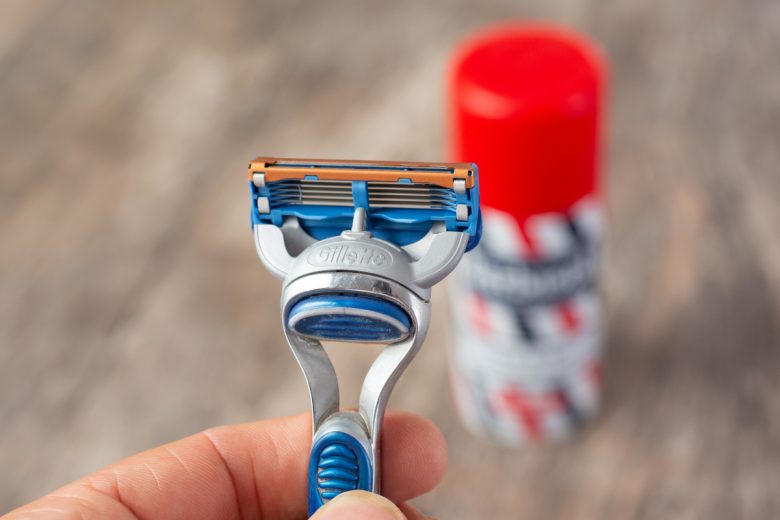There are many different types of business models available for a business to choose from. The razor and blade business model has been around for over a century and is still one of the most successful types. It’s a simple concept: sell something cheap at first but make money by selling customers additional products and services down the road. Although the business model is over 100 years old, it is still a profitable one.
Before using the Razor and Blade Business Model over others, let’s look at the aspects of this model.
What is a Razor and Blade Business Model?
The Razor and Blade Business Model is a business model in which a company sells a product or service at a low price (razor), then makes money by selling customers replacement parts or accessories (blades) at high prices.
The business model was first introduced by King Gillette in 1901 and has since been used by many companies to create successful businesses.
For example, many razors are sold at very low prices because they’re usually made from plastic and metal. But then you must buy new blades (or heads) every few weeks or months because they dull after repeated use. So, while the cost of the razor itself isn’t very high compared to other razors, it’s what you pay later on down the road that gives these companies such big profits: blade refills or replacement heads can be expensive!
Many people have found success with this business model because it allows them to sell a product at a lower cost than their competitors while making money over time through additional purchases from customers who need replacement parts or accessories for their products.
However, if you’re still considering another business model, consider researching others.
Examples of the Razor and Blade Business Model
You can think of the following examples as products that use the razor and blade, business model:
Software, hardware, and other products are sold at a low price. For example, Microsoft Office was initially sold as an office suite that included word processing software (the razor), spreadsheet software (the blade), etc. Then later, they started selling a plus package or student add-on.
Hardware devices with accessories or add-ons that have higher price tags attached. Think about your computer for a second: when you first bought it, did you buy just the laptop? Or did you buy all the extra stuff like speakers and maybe even some extra memory? The latter is what we call “blades” in this business model.
Smart TVs where users pay monthly fees to access content or services the company offers – think Netflix, HBO Max, Hulu. To watch certain shows, Hulu will usually ask you to upgrade.
Amazon offers its own example. You can buy a Kindle E-reader, which is the razor, but they also sell their digital books, which is the blade. Coffee makers work the same way. They are sold at low costs, but their coffee beans are expensive.
Consumers often seek convenient ways to get something done or simplify their lives. Sometimes it’s worth the money to buy something expensive if you know it will always be available and works well.
Does the razor and blade business model work?
The razor and blade business model works for companies that have a long-term relationship with their customers, sell products with a high price tag, and have high-quality products.
For example, Gillette’s razors have a high price tag, and their blades are costly. The company has been in the industry since 1901, so they’ve established a long-term relationship with its customers. This is one of the reasons why this business model works well for them.
Benefits of the razor and blade business model
The razor and blade business model have several benefits:
- It allows companies to increase profitability by locking customers into repeat purchases.
- Customers are willing to pay more for quality products that they know will last longer than cheaper alternatives
- Customer loyalty
- Once you have sold someone on your brand and convinced them to use it regularly, it is more likely that they will stick with it if they believe it works well for them. They will also be more likely to buy any other products you may offer in the future.
Disadvantages of the razor and blade business model
Disadvantages of the razor and blade business model include:
- Your customers may stop buying the consumable part of your offering (e.g., if they switch brands), then you lose revenue from those sales.
- Environmental costs
- High initial costs
You need to invest in a product that will last for years, which can be costly. A good example of this is printers and ink cartridges: The printer itself is usually cheap (or even free), but the price of ink cartridges makes it expensive to use over time.
Conclusion
There are many benefits and disadvantages to the razor and blade business model. It allows companies to make money on their initial product and recurring purchases, which can be a great source of revenue. However, this model can also have drawbacks, such as relying too heavily on recurring purchases or overcharging customers for replacement parts or add-ons. Before considering this type of business model for your business, make sure that it will ultimately make since for you in the long run.












Pingback: Understanding the Razor and Blade Business Model – Joseph O'Dierno Buffalo